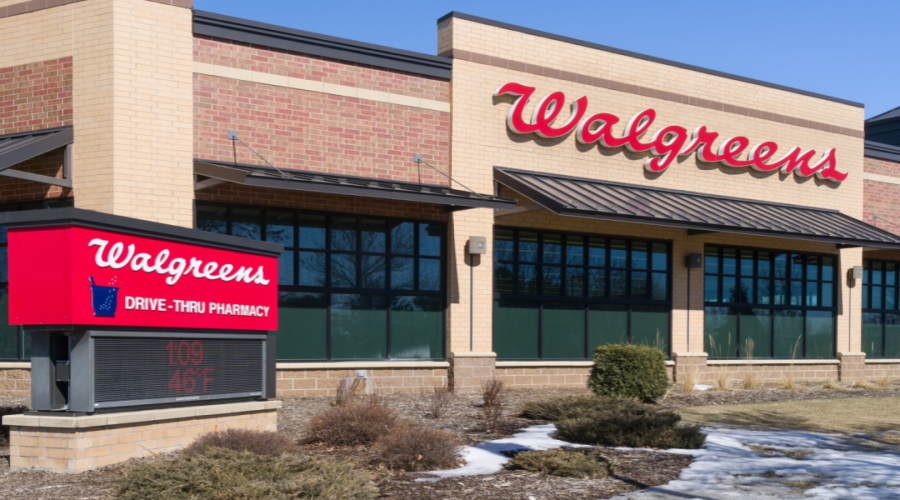Inside: Improve your bottom line by avoiding these inventory management errors.
Inventory costs tie up the bulk of your pharmacy’s cash flow. With individual prescriptions costing up to thousands of dollars per bottle, you need to have a tight grip on the reins of inventory management.
Keeping track of the inflow and outflow of products in your store can be a tricky task, but playing it fast and loose isn’t an option when small mistakes can lead to a big financial hit.
Watch out for these common inventory management mistakes that could be hurting your pharmacy’s finances.
Read Next: The Complete Guide to Pharmacy Inventory Management (Includes 7 Formulas)
1. Ordering too much
Even after you’ve paid for them, the products on your shelves are costing you money. The products you’ve stocked but haven’t sold yet incur holding costs. Think of the drugs currently on your shelves as cash, but it’s cash you can’t spend.
The more products you have on the shelf, the less cash you have in the bank to spend on things like making payments on debt or paying bills.
When you order a lot of a product, it will take longer for that item to turn over. Even if you see an extremely good deal on a particular drug, it’s not wise to order too much. You run the risk of the drug expiring before you sell it and losing money in the long run.
2. Ordering too little
Having too much product on hand is bad, but having too little isn’t any better.
Each time you order a product, you incur costs. You’re paying for shipping as well as for the time and labor it takes to receive, verify, and put away the stock. When you keep your inventory to an absolute minimum, you’ll have to place orders more frequently and end up incurring more of those ordering costs.
You also run the risk shortages. When a patient comes in with a prescription and you don’t have the right drug on hand, you’ll end up either paying extra for expedited shipping or losing the sale entirely. It could even lead to you losing a patient permanently if they decide to bring their prescription to another pharmacy.
3. Keeping disorganized records
If you’re keeping track of your inventory with a low-tech method like a Microsoft Excel spreadsheet, you’re opening yourself up to human errors. You could end up purchasing unnecessary items or not buying soon enough because numbers have been incorrectly inputted. You’re also wasting a lot of time sorting through rows and columns.
Instead, you should invest in an inventory management system that helps you stay on top of your records and makes your pharmacy more efficient.
Good inventory management software will keep track of your products through barcode scanning. When a product gets purchased, it will automatically update your inventory. Most will even send you an alert when products are getting close to being out of stock.
4. Ignoring important metrics
If you aren’t keeping track of key performance indicators, you won’t be able to make progress and improve your pharmacy’s performance.
The most important inventory metric to keep track of is your inventory turnover rate. That’s the number of times you completely “turn over” your inventory in one year. This metric helps you determine if your merchandise is moving off the shelves the way it should be. To find your inventory turnover rate, use this formula:
Inventory turnover rate = Annual cost of inventory ÷ Total inventory
A good inventory turnover rate is between 12 and 18—the higher the number, the faster you’re moving inventory off the shelves. If your inventory turnover rate is low, that could mean you aren’t offering products your patients want or you’re pricing them too high.
Another useful metric to keep tabs on is percent net profit. It tells you the ratio of profit to average inventory, and you can determine it using this formula:
Percent net profit = Average inventory ÷ Net profit
The higher the result, the more money you are making on your current inventory.
5. Not optimizing your reorder points
Most pharmacy owners use a perpetual inventory system that reorders products automatically once inventory levels reach a certain level. This method focuses on keeping inventory at consistent economic levels. You continually order based on real-time stock levels so you’ll always have stock available without going overboard.
This requires knowing where to set the reorder points to ensure you have proper stock quantities, which is a tricky decision. One method for choosing optimal reorder points is the Economic Order Quantity. The EOQ formula finds a mathematical sweet spot based on annual cost and demand data.
Here’s the EOQ formula:
Square root of [(2 x annual product quantity x ordering costs per order) ÷ storing costs
The result of the equation is the amount of product you should purchase each time you order.
When using the min/max method, the EOQ number should be the difference between your minimum and maximum. For example, if your EOQ is 25, your min could be five and your max 30. When your inventory reaches five, you’ll order 25 more products to fill your inventory back to the 30 maximum.
A more precise method is to set your reorder points based on guaranteed sales. If you have a reliable, steady stream of patients, you might base inventory almost entirely on current clientele. Rather than planning certain quantities and timing based on general sales data and estimates, you can stock what current patients already have prescriptions for and schedule the orders based on their refill dates. That’s what Dale’s Pharmacy in California does. These maintenance drugs from current patients account for the majority of his stock. If more than one patient is using the same medication, the pharmacy typically keeps a two-week supply of generics and a one-week supply of brands.
6. Not performing regular cycle counts
Hand counting your inventory is a tedious endeavor, but without it, you can’t know for sure whether your inventory is accurate. The last thing you want is a patient coming in for a specific product and even though the computer says you have it on hand, you can’t find it in the store.
With cycle counting, you count your inventory in small sections over time instead of going through your entire store all at once. Eventually, you’ll have gone through the entire store.
Staff members can perform cycle counts during their regular hours, which means you don’t have to close down the pharmacy or pay overtime wages like you would with a full inventory count.
7. Neglecting your backup plan
You go to buy a drug from your primary wholesaler and it’s not available—what’s your plan? If you accept a substitution, it might not be on your source list and end up costing you an arm and a leg. You could skip the purchase, but that might mean you don’t have the medications your patients need.
All pharmacies should have a quality backup supplier on reserves. Not all secondary suppliers are created equal, however. If you just go with the cheapest option, you could end up with counterfeit drugs from suspect sources.
You should look for an NABP-accredited (formerly VAWD) secondary supplier like BuyLine® from PBA Health that offers low prices without sacrificing quality. BuyLine offers a full line of brands, generics, OTCs, and controls at the lowest prices in the secondary market. In addition to having low list prices, BuyLine also rewards purchases with cash rebates and significant discounts on brands. Earn up to an additional 10% rebate on generics and up to WAC -4% on brand.
A Member-Owned Company Serving Independent Pharmacies
PBA Health is dedicated to helping independent pharmacies reach their full potential on the buy-side of their business. Founded and owned by pharmacists, PBA Health serves independent pharmacies with group purchasing services, wholesaler contract negotiations, proprietary purchasing tools, and more.
An HDA member, PBA Health operates its own NABP-accredited secondary wholesaler with more than 6,000 SKUs, including brands, generics, narcotics CII-CV, cold-storage products, and over-the-counter (OTC) products — offering the lowest prices in the secondary market.












